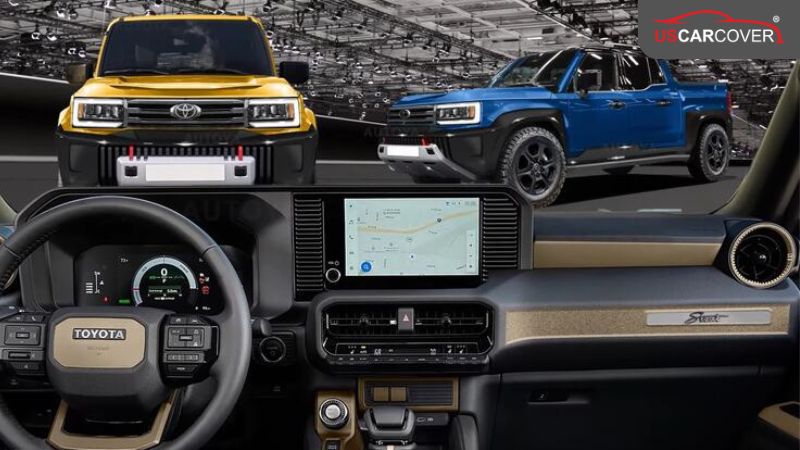
I know you are waiting for a compact pickup from Toyota for American cities, something small enough for downtown, efficient enough for daily commuting, yet flexible for weekend chores. The name enthusiasts keep mentioning is Toyota Stout. Before we go deep into a “review,” I want you and me to align on one key point: as of now, Toyota has confirmed development of a compact pickup positioned below Tacoma, but the Stout badge and the final retail timeline have not been officially announced. Solid industry reporting suggests dealership arrivals could land in 2027, even 2028, while 2026 is more likely a reveal year for a concept or pre production preview.
Therefore, this review is written as a “get ready to buy” guide based on what the market has revealed so far: platform direction, product positioning, powertrain family, price band, and target customers. The aim is to help you understand how Toyota’s compact pickup might fit American urban life, your budget, usage habits, and your priorities around tech, operating cost, and durability.
Related Articles: 2026 Lexus LX600 Review: Is It Worth 100,000 Dollars
What Stout is, what is confirmed, and what is not
In Toyota history, Stout was a light duty pickup nameplate. Recently, the name resurfaced as Toyota evaluates the compact pickup segment in the United States to challenge Ford Maverick and Hyundai Santa Cruz. While enthusiasts often call the project “Stout,” Toyota has not confirmed the final retail name. Industry outlets indicate a unibody layout on a TNGA architecture aimed at city use, with a starting price around 30,000 dollars to keep distance from Tacoma. The earliest dealer timeline discussed is 2027, possibly later, and 2026 may be a reveal or pre production moment.
Your takeaway: a compact Toyota pickup for the U.S. is indeed in the works, likely unibody, positioned below Tacoma, and priced to be accessible. The Stout name and delivery timing remain open. Some reporting even suggests a conservative 2028 sales start.
Related Articles: 2026 Toyota Corolla Cross Hybrid Review: S, SE, or XSE - which trim makes the most sense for urban America?
Projected exterior: city friendly footprint with real “Toyota truck” muscle
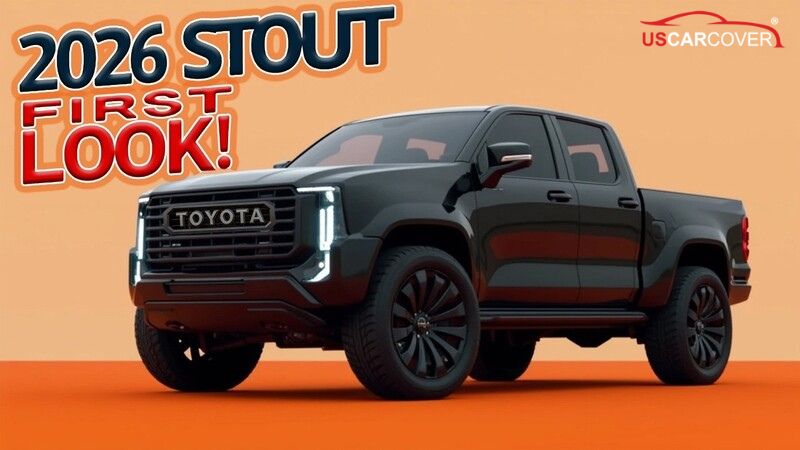
If we follow product logic and credible renders, this compact pickup will likely carry the design DNA of Toyota trucks: a strong trapezoidal grille, squared lighting, pronounced wheel arches and cladding, and honest, blocky surfaces, all packaged into tighter proportions that help in tight parking. Even with a unibody, expect the stance to borrow from body on frame siblings so it still looks and feels like a true truck. For American urban buyers, that is a useful blend of authentic pickup attitude and garage friendly size.
I expect Toyota to differentiate looks via packages: a street leaning setup with a slightly lower stance, 18 inch wheels, efficiency tires, and a light off road flavor trim similar to a TRD Lite with all terrain tires, skid protection, extra ground clearance, and bolder accents. Up close, count on crisp body lines, compact side steps, practical bed rails, and a scratch resistant bed liner for everyday use.
Related Articles: 2026 Honda Prelude Review: Not Just Showroom Pretty, A One Week Real World Test
Interior and tech: TNGA spirit with crossover comfort
A compact unibody pickup aimed at cities will lean toward a crossover like interior: supportive seats, a wide center armrest, smart storage, and materials that are both durable and nice to touch. If the platform shares much with RAV4 or Camry under TNGA K as analysts expect, the cabin should feel more “car like” than “work truck.” That fits American urban and suburban users who need a daily pickup that is quiet, efficient, and well connected.
On the tech side, I expect a large central touchscreen, wireless Apple CarPlay and Android Auto, multiple USB C ports, wireless charging, automatic climate control, heated and ventilated front seats in upper trims, and a surround view camera system for tight parking. The latest Toyota Safety Sense suite is very likely, including automatic emergency braking, lane keeping assist, adaptive cruise control, blind spot monitoring, and rear cross traffic alert. The formula is “crossover comfort, pickup utility,” which is exactly what young buyers, small families, and small business owners want for everyday living.
Powertrain and performance: hybrid focus, plug in hybrid possible

Reporting points to a clear hybrid focus, with both front wheel drive and AWD likely. The powertrain could be adapted from RAV4: a 2.5 liter hybrid around 226 to 236 horsepower depending on drive layout, and if Toyota greenlights a plug in hybrid akin to RAV4 Prime, output could exceed 300 horsepower. Of course, this is a projected strategy based on Toyota’s current TNGA lineup, not an official spec sheet.
Your advantage is simple. Hybrid means lower fuel spend and potentially lower routine maintenance than a pure gasoline setup, especially in city cycles. With a plug in hybrid, short commutes could be mostly electric if you charge at home, slashing fuel costs while staying road trip ready.
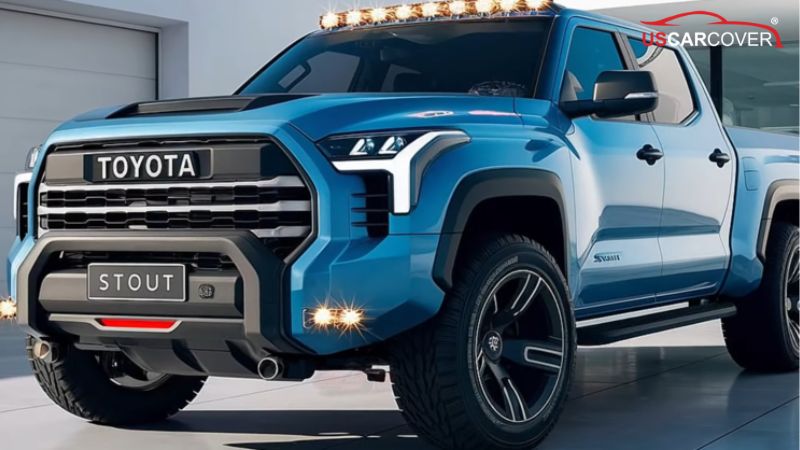
Related Articles: 2026 Ford F-100 (EV & Gas) Review vs Ford F-150 XL – Which Pickup Fits Your Needs?
Off road ability: enough for recreation, not a Tacoma replacement
A city centric unibody compact pickup will not try to replace Tacoma for serious off road duty. That said, AWD with extra clearance, decent approach and departure angles, underbody protection, simple terrain modes, and all terrain tires should make it perfectly fine for gravel, light mud, camping trails, and towing a small canoe to the lake. The guiding philosophy is to capture the visual and functional spirit of a truck, for owners who want weekend adventures without needing a heavy, body on frame rig.
Hauling and practicality: urban ready, optimized for everyday needs
The mission here is a just right bed and a roomy cabin for four to five people. Expect tie down points, a bed outlet at 12V or 120V on upper trims, clever small compartments, and a non slip bed liner. Official payload and tow numbers are not announced. If TNGA K is the base, engineers may target realistic tow figures informed by RAV4 AWD’s 3,500 pound reference, but that is only a technical reference, not a promise for the pickup. We will need to wait for Toyota’s official numbers.
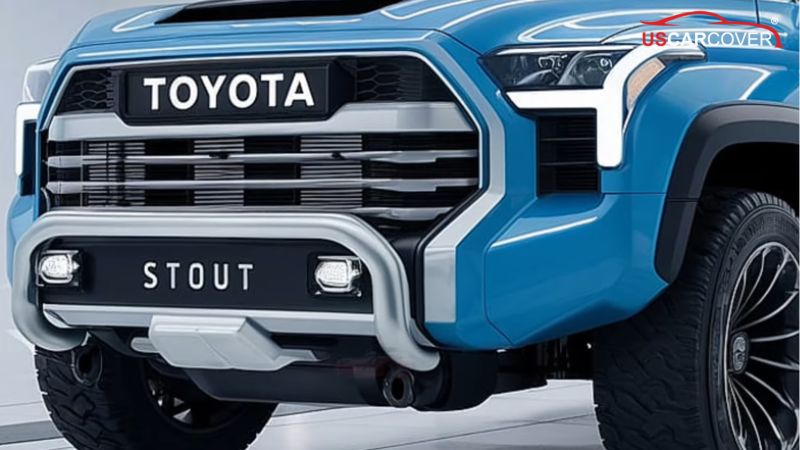
Related Articles: 2026 Ford F-150 Review: 7 Trims and Packages to Consider (including the return of King Ranch and Platinum 2WD)
Fuel economy and ownership costs: hybrid advantages in U.S. cities
Daily commuting in U.S. cities is the main usage scenario. In that setting, hybrids dramatically cut fuel burn during congestion, stoplights, and short hops. If you choose a plug in hybrid and charge at night, fuel costs drop further. Toyota’s hybrid maintenance schedules tend to be straightforward and durable, helping five year total cost of ownership stay competitive with C segment SUVs. This is the exact selling point against Ford Maverick Hybrid: everyday economy plus a useful bed.
Maintenance and long term durability: Toyota’s “use long, fix little” philosophy
The durability of Toyota hybrid systems has been proven across multiple nameplates. Widely available parts, a dense dealer network, and transparent routine service costs let you plan long term with confidence. With TNGA architecture and the latest hybrid hardware, you and I can expect a long service life with minimal surprises, ideal for young families and small business owners who need one vehicle that commutes, carries light loads, and stays dependable.
Related Articles: 2026 Chevrolet Suburban Review Can V8 & Diesel Still Beat Hybrid?
Expected pricing and configurations: positioned under Tacoma for accessibility
Industry consensus points to a 30,000 dollar starting price, with an upper ceiling around 45,000 dollars when fully loaded, so it keeps respectful distance from Tacoma. That pricing lets the new truck fill a market gap for people who want a pickup but not the footprint or price of a midsize. The final retail name, trim count, and detailed equipment will come closer to on sale timing. On timing, most sources indicate dealer sales in 2027 at the earliest, and 2026 as a concept or pre production reveal. Some conservative views mention 2028.
Anticipated driving experience: calm and intuitive like a crossover, flexible like a pickup
Putting myself in the driver’s seat of a Toyota unibody hybrid pickup, the biggest expectation is crossover like cabin calm, light steering in town, smooth initial response at low speeds, and the electric motor’s assistance for quiet, easy moves. At highway speeds, an AWD version with appropriate wheels and tires should keep the body settled, while a light adventure tuned trim can soften damping to handle broken surfaces comfortably. Regenerative braking should add a touch of EV feel, saving brake pads and smoothing stops, as long as Toyota tunes pedal feel to be linear like its recent hybrids.
Related Articles: 2026 Toyota Hilux Review The Truth After I Drove It
Fit for American user needs: who is Stout’s core audience
- Young urban families: five comfortable seats, an enclosed cargo area inside the cabin for personal items, and a bed for dirty or bulky weekend loads. Hybrid keeps fuel costs down.
- DIY and outdoor enthusiasts: a small, efficient pickup that can tow light gear, haul camping equipment to the woods or the coast, and fit in tight boat ramps and campsites.
- Small business owners: short city routes, medium sized deliveries, low fuel spend, and easy parking.
- First time truck buyers: want pickup practicality without the size and cost of a midsize truck.
Material value and emotional value
Material value comes from low operating costs, the flexibility of an open bed, standard active safety tech, and the durability of Toyota hybrid systems. Emotional value comes from owning a “real pickup” that is still city friendly, easy to drive, and easy to live with, carrying Toyota’s reputation for reliability and resale. In the U.S. market, where one vehicle often wears many hats, a compact hybrid pickup is a smart way to optimize both your wallet and your experience.

Related Articles: 2026 Toyota RAV4 Review: Is it still worth buying in the all-electric era?
Quick look at rivals
Ford Maverick: set the standard for accessible pricing and hybrid efficiency. Toyota will need perceived quality, durability, and dealer ecosystem strength to compete.
Hyundai Santa Cruz: leans into lifestyle and crossover like driving. Toyota can win on dealer reach, brand strength, and long term durability.
Tacoma inside the Toyota house: Stout does not replace Tacoma. Stout targets cities, efficiency, and compact packaging. Tacoma remains the pick for heavier off road and larger tow jobs.
Projected pros and cons
Projected pros:
- Compact size that is easy to drive and park.
- Hybrid efficiency with historically low maintenance based on Toyota’s hybrid experience.
- Rich standard safety tech through Toyota Safety Sense.
- A versatile bed for weekend life and light work,
- A competitive starting price that keeps respectful distance from Tacoma.
Projected cons:
- Retail timing is not soon, more likely 2027 or later.
- Unibody is not meant for heavy off road or big tow ratings like a body on frame truck.
- The “Stout” name is not guaranteed as the final retail badge.
How to protect 2026 Toyota Stout
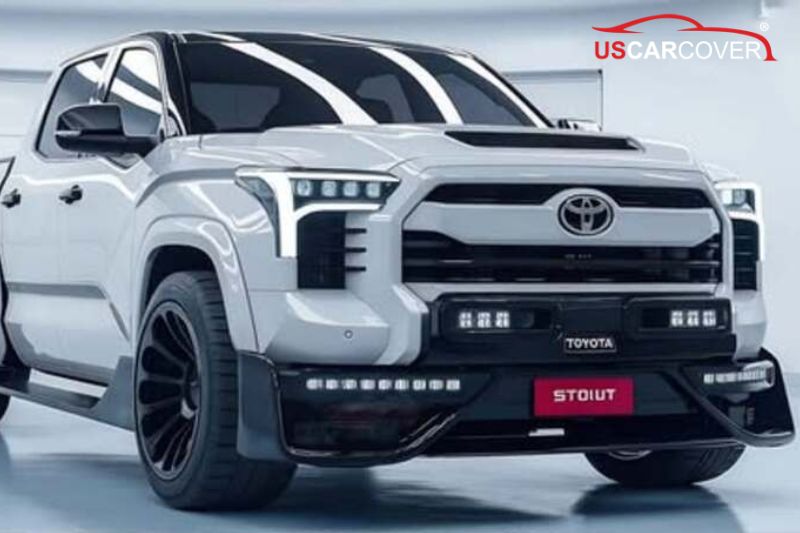
Whether you park outdoors or in a garage, protecting paint and interior helps the truck look newer for longer, especially for American urban owners who face dust, intense sun, or seasonal rain and snow.
Smart car cover choices:
- Outdoor use: pick a breathable 2 to 3 layer car cover with an ultra soft liner, anti static treatment to resist dust, and wind straps.
- Indoor use: pick a satin car cover that hugs the body, deploys quickly, and blocks fine garage dust.
- Custom fit: always choose a custom fit car cover sized to a compact Toyota pickup to avoid excess fabric that can rub in strong winds.
Real world benefits:
- Limits UV fade and plastic aging.
- Reduces parking lot micro scratches.
- Keeps the cabin cooler after long parking, easing A/C load.
- Helps preserve resale value by keeping paint and gloss trim clean.
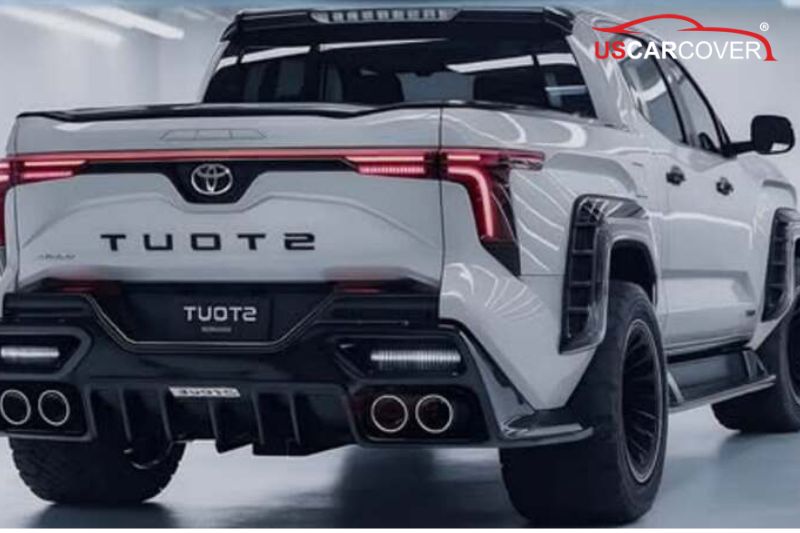
From my perspective, “2026 Toyota Stout” should be read as the year you start watching closely, while the year you can actually bring one home is more likely 2027 or later. What is already quite clear: a TNGA based unibody aimed at city life, a hybrid centric powertrain strategy, and a starting price near 30,000 dollars to slot between compact sedans or C segment SUVs and midsize pickups. That makes Toyota’s compact truck a sensible choice for American users who want a commuter that is efficient and easy to drive, yet still has a bed for an active weekend.
If you need a truck now, current rivals like Maverick and Santa Cruz remain practical picks. If you can wait, history suggests Toyota brings durability, predictable ownership costs, and deep service coverage. When Toyota’s compact pickup appears, it is likely to be a truly useful, efficient, and easy living machine. The remaining pieces are official specs, but at this moment, all signs point toward the exact package urban American drivers have been asking for.
